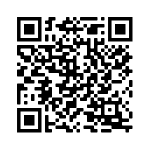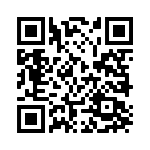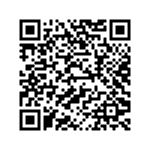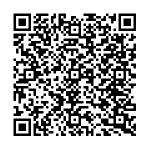2 Educating Students with Blocked Trust with Dr. Kim Golding
Helping students feel safe is a hallmark of trauma-informed education. For some children, feeling secure in relationships is difficult. Well-intentioned teachers often lack the skills required to communicate and reinforce a sense of trust amongst these students. In this episode, we speak with Dr. Kim Golding about her book, Working with Relational Trauma in Schools.
Dr. Kim Golding
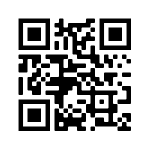
 Dr. Kim Golding received a doctorate in Clinical Psychology from Leicester University and has established and evaluated an integrated service for fostered and adopted children in Worchester, United Kingdom. The service provides support for foster, adoptive and residential parents, schools and a range of professionals around the children growing up in care or adoptive families. Dr. Golding has been trained and mentored by Dr. Daniel Hughes in using Dyadic Developmental Psychotherapy and Practice. Based on what we understand about the attachment and trauma needs of children, this approach underpins the support offered to foster, adoptive and residential parents, schools and professionals through consultation, training and supervision. Dr. Golding’s book, Working with Relational Trauma in Schools, written with Sian Phillips and Louise Michelle Bomber, explores how educators can easily use Dyadic Developmental Practice to help vulnerable students thrive.
Dr. Kim Golding received a doctorate in Clinical Psychology from Leicester University and has established and evaluated an integrated service for fostered and adopted children in Worchester, United Kingdom. The service provides support for foster, adoptive and residential parents, schools and a range of professionals around the children growing up in care or adoptive families. Dr. Golding has been trained and mentored by Dr. Daniel Hughes in using Dyadic Developmental Psychotherapy and Practice. Based on what we understand about the attachment and trauma needs of children, this approach underpins the support offered to foster, adoptive and residential parents, schools and professionals through consultation, training and supervision. Dr. Golding’s book, Working with Relational Trauma in Schools, written with Sian Phillips and Louise Michelle Bomber, explores how educators can easily use Dyadic Developmental Practice to help vulnerable students thrive.
Click or scan the QR code to learn more about Dr. Golding’s work .
Dr. Krishnamoorthy: How has your own experience of school influenced the work you do now?
Dr. Golding: I was a product of the grammar school system – a private school that typically selects its pupils based on academic abilities. My sister wasn’t chosen to attend the same school, so I have a first-hand experience of how divisive the school system can be and how the effects of that stay with you for life. I also completed school, and she didn’t. At the grammar schools, we were frequently told we were the elite of the elite. My sister had the opposite experience in a public school where she was repeatedly told she wasn’t good enough. I’m the academic one of the family, and she’s the creative one. She’s always minimised that as a skill and her intelligence. The school system can do that to you in the early days. There’s a lack of understanding of how children are experiencing the pressures of school systems and what that experience of passing or failing school means for students.
Trauma, Attachment and Blocked Trust
Dr. Krishnamoorthy: How do you make sense of trauma and interpersonal trauma in your work? And how do you conceptualise the idea of Blocked Trust that you discuss in your book?
Dr. Golding: As we speak, the world has experienced a significant trauma impact over the last 12 months with the COVID-19 pandemic. The pandemic is a trauma outside of the family, and children experience the family as a source of protection. Children have their family members to help them feel safe. They feel connected with their family, and this connection allows them to manage what feels like a very unsafe situation for them. One way to think about trauma is as being outside of the family. We can also think about trauma originating from family relationships. When you think of trauma this way, you’re taking away that sense of family protection. You’re removing the people who can support you through these traumatic events. Who protects you if the trauma comes from within the parenting you experience? Who comforts you? Who can you turn to when in need? Who can you trust? Who’s got your back?
Those people who should be there protecting you and comforting you are the ones that are scaring and frightening you. The experience for the child then is a profound sense of mistrust in the parenting they’re experiencing, in the relationships that should be helping them to feel safe in the world. When that experience of trauma is pervasive, starting early in life, it becomes a block to trusting other relationships When that experience of trauma is pervasive, starting early in life, it becomes a block to trusting other relationships. . Even if your parents are in a better position to keep you safe and protected later, or whether you’re moving to alternative parents or moving out into the world and going into school, all relationships become a threat. That’s what we mean by Blocked Trust. It has a biological substrate, and research shows that this sets in your nervous system. This is not just about learned behaviour. It’s more profound than that – a deep sense of ‘I can’t find anyone to trust in the world, so I have to do this myself.’
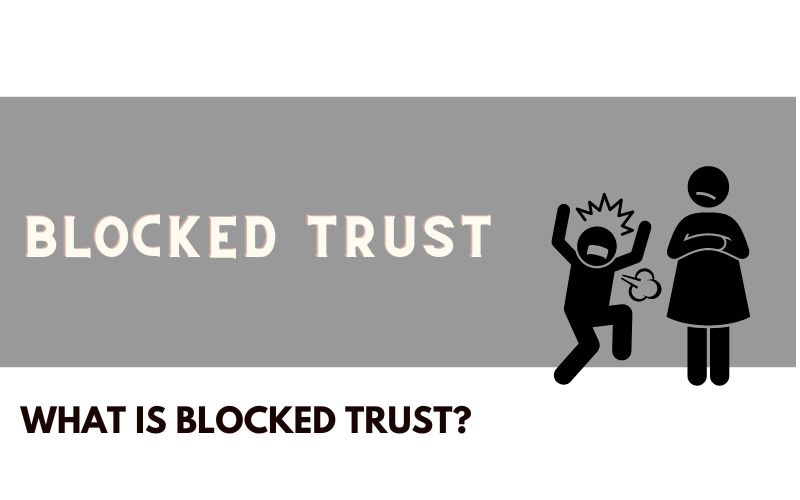
![]() Blocked Trust
Blocked Trust
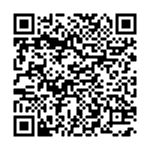 Blocked Trust occurs when children have experienced abusive or neglectful relationships with their primary caregivers early in life, resulting in an inability to trust and experience safe relationships with others.
Blocked Trust occurs when children have experienced abusive or neglectful relationships with their primary caregivers early in life, resulting in an inability to trust and experience safe relationships with others.
Click or scan the QR code read about addressing blocked trust in children in this resource from the Mental Health Foundation in Wales.
Dr. Krishnamoorthy: There’s a lot of information about the development of attachment styles in children from safe and unsafe relationships with primary caregivers. What does blocked trust look like in the various types of insecure attachment that children experience?
Dr. Golding: If we think about attachment, we also have to think about intersubjectivity, two sides of a relationship experience that children need early in life. People who can offer you comfort at times of distress, a reciprocal relationship experience, and people who can share their experience of you and the experience of the world. Children learn about themselves and the world through their parent’s eyes, which is the reciprocal part of the relationship experience. If we think about Blocked Trust, we must consider the impact on both people. The effect of attachment is that children develop an insecure attachment because they cannot feel safe. They don’t have a source of comfort to turn to reliably. Hence, they find ways to adapt to that. Blocking trust with others is how children adjust to and develop an insecure attachment style. Children essentially find different ways to feel safe in the world because those relationships offer insecure patterns. For instance, if I feel wobbly, I turn to you, you might be less wobbly, but you’re not available to me. Children will learn different ways of adapting when parents aren’t available to comfort them. People will be familiar with avoidant attachment, where we become more self-reliant, and ambivalent attachment, where we become more attachment needy. Those are the two predominant styles of insecure attachment. The disorganised attachment style then takes avoidant and ambivalent attachment styles to a more extreme position. Additionally, suppose you’re working hard to feel soothed in an attachment experience. In that case, you can’t relax and enjoy the reciprocal relationships that may or may not be available to you to feel safe.
![]() What is Attachment?
What is Attachment?
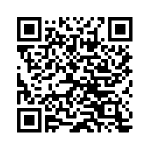 Attachment theory attempts to explain attachment and attachment behaviour. Attachment behaviour is the observable action that the person does to be able to be physically close to the attachment figure and remain there. Attachment behaviour is evident throughout our life, and to know there is a significant ‘attachment’ person who will help us in times of need provides us with protection.
Attachment theory attempts to explain attachment and attachment behaviour. Attachment behaviour is the observable action that the person does to be able to be physically close to the attachment figure and remain there. Attachment behaviour is evident throughout our life, and to know there is a significant ‘attachment’ person who will help us in times of need provides us with protection.
Learn more about trauma from our book Trauma Informed Behaviour Support by clicking or scanning the QR code.
Dyadic Developmental Practice (DDP) and PACE
Dr. Krishnamoorthy: How would you describe the Dyadic Developmental Psychotherapy approach on which your book is based?
Dr. Golding: Dan Hughes originally developed DDP in America (check the box below for a video about DDP). Dan is a Clinical Psychologist working with adopted and foster children and found the usual ways of providing therapy for these children weren’t helping them. So, Dan developed his model based on the experience of children who’ve missed out on healthy relationship experiences early in life and finding ways of recovering that healthy relationship experience later in life or with foster or adoptive parents. The word Dyadic indicates that we can’t work with children independently and must work with children and their parents within a safe relationship. Children need to work with safe parents to recover the relational experience they need for secure attachment and the trust that comes with that safe relationship. The ‘Dyadic’ in DDP represents the trust in the relational experience that the children didn’t have early in life. The ‘Developmental’ within DDP is based on our understanding of child development. Helping children have a successful developmental pathway fundamental to the model. ‘Psychotherapy’ in DDP is because it is a therapy model with a therapeutic approach. Over time more and more professionals were being trained in the model who weren’t psychologists but worked in Social Work, Residential Care, or Education which has prompted the name change to Dyadic Developmental Practice. There is now Dyadic Developmental Psychotherapy, Dyadic Developmental Parenting, and Dyadic Developmental Practice to highlight this is greater than just a therapy model. The therapy is still there, but around the therapy is a parenting model, and around that is a systems model that includes education systems. The goal is to bring the same principles into all the environments the children live in, with education and schools being an essential part of that environment.
PACE is the attitude that is central to and underpins the DDP model. It’s an attitude based on what we offer healthy relationship experiences to our young children. Within those healthy relationship experiences in DDP, we offer children an attitude of Playfulness, Acceptance, Curiosity and Empathy. We’re interested in their inner world and what’s going on within them, what they’re thinking and feeling. Imagine having a conversation with a baby. We have the words they don’t have yet. All our words are about what’s happening inside them, for example, “you’re feeling happy today”, “Oh, no, no, now you’re upset”.
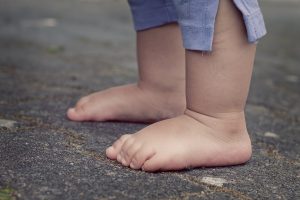
We talk about what’s going on internally and tend to do that naturally through infancy and toddlerhood. It tends to fade away after that, which is quite sad as we expect children to know by then they’re in a world, and we don’t need to make sense of it anymore. All children, and most adults, like to have our inner world made sense of by others. PACE, then, is an attitude that can apply to all relationships. Dan realised that if we’re going to help children heal from relational traumas, then the PACE attitude is critical. Making sense of a child’s inner world in a playful, accepting, curious and empathic way is essential to helping them feel understood. It’s critical to assist them in learning to trust that others are reliable and can help them in their distress. When a child is distressed, good parenting feels like making the distress go away. To help a child, to help another colleague, another human, we must make them feel understood and heard. People want others to sit with them when it’s uncomfortable. If you were expressing a level of sadness about a recent event to me, you don’t want me to come in and say, “it’ll be all right”, “by next week, this will all be in the past”, or “why are you worrying”? “What you want is someone to say that sounds tough, you’re having a tough time right now, and I get it, and I think it’s making you very worried.” Then I feel a bit better because you get it, you understand. I feel better because I know someone else understands what I’m going through. That’s at the heart of PACE. The PACE model is sitting compassionately with another person’s experience. Within DDP, we talk a lot about slowing down, which we don’t usually take the time to do. Slowing down looks like “let me listen to you”, “let me hear and know your story”Slowing down looks like “let me listen to you”, “let me hear and know your story”.. “Let me share what I’m hearing about your story and allow me to add a little to it with my curiosity into your story.”
![]() Dyadic Development Practice
Dyadic Development Practice
Dr. Ayre: From a teacher’s point of view, unless a student is unsafe, we don’t always have to act immediately, which is hard to do. Just because something’s disrupting at the moment for you, you don’t have to jump in straight away and do something to “fix it”. The word therapy instantly brings up thoughts: “I’m not a therapist; I can’t do a therapeutic thing because I don’t have training in it”. You tend to quickly flick the responsibility outside your classroom because that’s not something you know how to do.
Dr. Golding: Teachers have a whole classroom of children that need educating, and it can feel overwhelming, and you ask yourself, “how have I got time to do this”? “You’re asking me to slow down, but I’ve only got so many hours in the day, and I’ve got so many children to attend to”. An important message here is that slowing down is just about saying, “have I understood or do I need to have a bit more understanding here”? That can happen with an acknowledgement to the child, such as saying, “you’re having a tough day, and I’m here”. That doesn’t have to take very long. I knew a primary school teacher who would just put a note on the desk if he noticed a child struggling that said, “I’ve noticed”, “I’m noticing you’re struggling today”. He often wouldn’t even have a conversation with the student. Slowing down doesn’t have to mean hours and hours of sitting and talking to a student.
![]() Attachment, School and Learning
Attachment, School and Learning
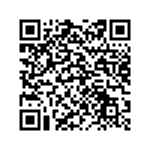 Students who have attachment difficulties engage in misbehaviour to cope by ‘getting’ control over people – adults and other children – through coercion, deception, and aggression (verbal, physical). These children may have learned to use such behaviours to get them access to preferred activities and objects and proximity to adults. Let us look at a framework of practice to support these students.
Students who have attachment difficulties engage in misbehaviour to cope by ‘getting’ control over people – adults and other children – through coercion, deception, and aggression (verbal, physical). These children may have learned to use such behaviours to get them access to preferred activities and objects and proximity to adults. Let us look at a framework of practice to support these students.
Learn more about trauma from our book Trauma Informed Behaviour Support by clicking or scanning the QR code.
The Two Hands of Teaching
Dr. Golding: Dan Hughes initially talked about two hands of parenting, and the two hands of teaching is an adaptation of that. The phrase ‘connection before correction’ is one of Dan’s phrases. The connection is the emotional connection with the person, and the importance of ensuring the relationship is there. Correction is about the doing. It isn’t about punishment but learning and teachingCorrection is about the doing. It isn’t about punishment but learning and teaching.. It might be changing something I’m doing because what I’m doing with you is not working; hence the correction is about action. The connection is my emotional relationship with you, which will help the doing happen more successfully. In schools, we have the connection, on the one hand, which includes warmth, empathy, nurturing, and curiosity about your internal experience. There is also the doing part. You hit your peer, which isn’t an acceptable way of managing things. We need to think about how we can make sure that doesn’t happen again and how we can help you repair the relationship with your peer. If we do that alongside the connection, the child will find it much easier to engage with and be less defensive. If students are less defensive, they’re much more likely to learn from the experience where we’re supporting them. We want a child to learn how to manage conflict with peers without hitting them or just going straight to the correction. If we go straight to discipline without connection, the child becomes defensive and starts feeling like they’re bad. Children don’t like feeling like they’re bad, so they may go into shame. An experience of shame takes you away from learning about the world because it becomes very self-focused. Children can’t learn when they’re in a state of shame, they can’t learn academically, and they can’t learn how to resolve the conflict next time. Suppose we can put the second hand in there, connect with the child, and make sense of their experience of what got them so angry. In that case, we can work with the child to resolve the conflict experience. Remember that being angry is a feeling which is neither right nor wrong. We need to help the child understand and then empathise with that experience. Collaborative consequences[1], rather than coercive consequences[2] where the adult imposes a consequence on the child, are more effective in helping the child learn they can help make things better and repair relationships. This will help them learn how to deal with friendships and relationships in the real world as they grow older.
Dr. Krishnamoorthy: One of the things I found powerful about the PACE model is that the focus is always on the relationship rather than just the doing of calming someone down. The focus is always on understanding the child and providing them with the experience of feeling understood.
Dr. Golding: The relationship is more important than the goal. In de-escalation, you have a clear purpose of calming yourself down. Then life is easier for all of us. It’s not an unreasonable goal, but we go a step further than that. My goal is to understand and get to know you. I’m hopeful that that will also help you calm down and make life easier for all of us. Then we talk about storytelling and finding the story or the narrative. I want to understand your experience here, so I’m not just going to come in to calm you down. I can do that, and there are techniques for doing that, but I’m going to do something additional. I want to help you calm down, but I also want to know you, and I want to know what’s going on for you. I want to discover your story, the story of this moment, your story of this experience. I’ll have a more profound empathy for you in understanding that story. When you receive empathy, you will feel more deeply understood, which will help the calming down process. It will also get your thinking brain working so we can figure out what went wrong and we can figure out what we could do another time. In that sense, it’s much, much bigger than just de-escalation.
Dr. Krishnamoorthy: With de-escalation, we often fall into the trap of stepping into that control and coercion, whereas with PACE, it’s about relationship building and care and concern for the child.
Dr. Golding: De-escalation, at its best, isn’t about controlling people, but it is focused on using techniques and is goal orientated. PACE is much broader than that with its relational focus. The central element of DDP is that it’s a relational model. The relationship is more important than anything else. The belief is if we understand our students and have a relationship with them, that will calm their nervous systems down and help them feel safeThe belief is if we understand our students and have a relationship with them, that will calm their nervous systems down and help them feel safe.. It will support their emotional well-being, so they’re in a much better learning state. We can then achieve our secondary goal of teaching them. This can sound a little strange to teachers. Why would teaching be a secondary goal? If we think about how we work as human beings, we learn when we’re emotionally safe. If we’re not emotionally safe, our nervous system puts us in a state to deal with the danger, not to learn. While we have an overall goal to teach our children, our primary purpose must be to help them feel safe and emotionally supported to learn. When they feel safe and emotionally invested, then we can achieve our goal of teaching them. Unfortunately, that’s not often understood in the education system.
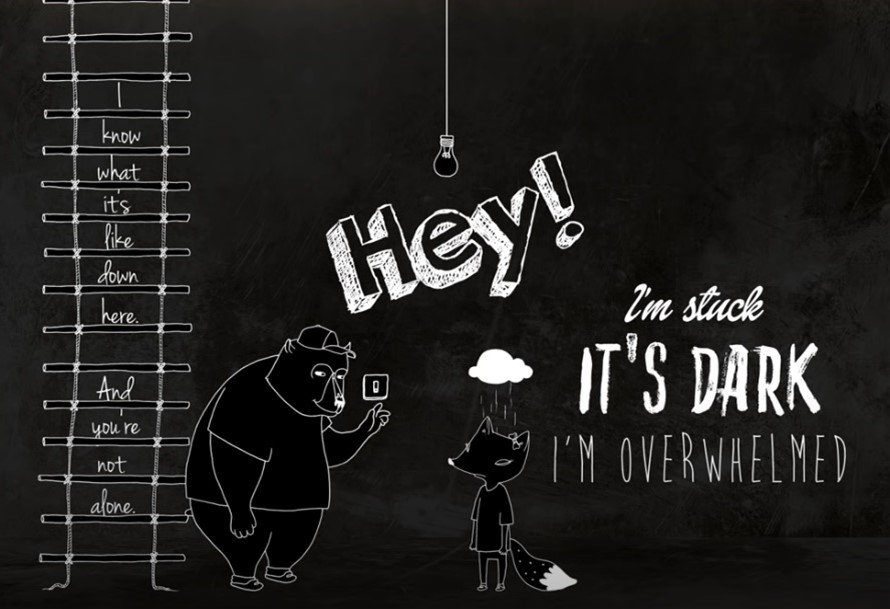
![]() Empathy and Coregulation
Empathy and Coregulation
Click or scan the QR code to watch this interview of Brené Brown speaking about empathy and coregulation [2:53].
Practising in the Moment
Dr. Golding: The model starts with ‘noticing’. Notice if something needs attention, and take immediate action to keep everyone safe. For example, if Billy and Joe are fighting, we must break up the fight for safety. The fast route we usually take then, what’s the consequence here for fighting? Maybe it’s detention after school or at lunchtime. That’s the quick route of managing the children but with no connection. I’ve tried to show what the slow route looks like, which is more effective in emotion regulation. The next part of the process is to notice your reaction and focus on yourself. Ask yourself, how am I doing in this situation? Am I regulated enough to help these kids, or do I need to take care of myself first? If I need to take care of myself, can I hand the children over to someone else because these children need support right now? If I can’t, can I at least take a breath, have compassion for myself, focus on the children, and breathe? I can remind myself this is hard, and it’s okay. I might struggle, but we’ll get through it. Compassion for yourself can allow you to be more open and engaged with the childrenCompassion for yourself can allow you to be more open and engaged with the children.. Instead of saying, “what the heck is going on here”? You can now calmly say, “hey boys, you’re having a hard time today. Let’s figure out what’s going on here”. Then it’s essential to think about emotion regulation for the children. Are they regulated? If they’re not emotionally regulated, it’s no point in doing anything else because they’re not in a state to receive it. We have to put our attention on regulation first. We might say, “come on, boys, we’re going to go for a walk. I want one of you on either side of me, and while we walk, we’ll think about what’s going on”. Walking and movement is doing something to help the regulation process. We know from occupational therapists that all sorts of things can help children regulate at a sensory and an emotional level.

Once the children are calm, you can say, “Okay, you’ve had a hard time, let’s figure this out”, which is Dan Hughes’ favourite phrase! Another vital part of this process is to not immediately say, “I want you to think about the other person and the impact on them”. We need to start with ourselves first. If I’m talking to Billy, who was going for Joe, it’s no good to be asking Billy what you think Joe’s feeling right now. Billy will go straight into shame and defensiveness, thinking shuts down, and I’ve lost my opportunity to connect with him. Instead, starting with Billy, we ask something like, “what was going on for you”? “I wonder what made you so angry”? During this process, we must remember anger is just a feeling, and it’s neither right nor wrong. It just is. We may say, “help me understand why you got so angry”. When you understand, you give back with empathy, “that was hard for you when that happened”. Now the child is feeling like you get it. He’s not feeling shame now, he’s starting to feel a bit of guilt, and he’s starting to feel some remorse. Billy then thinks, ‘I didn’t want to hurt Joe. He’s my friend, and I don’t know what to do about that, but I feel it. Now Billy’s receptive to some ideas. If we move from shame to guilt, guilt allows remorse and the desire to make amends. So now Billy is in a receptive state. We can think about Joe. “Joe’s upset with you. I don’t want him to be upset with you. I wonder what we can do about that”?
The next part of the sequence is the action part. What are we going to do about this? Here, the collaborative consequence comes in. The adult takes some responsibility here as well. It might be that maybe you guys aren’t ready to play together for half an hour. Perhaps you need a little more supervision or structure to play together? That’s my responsibility as an adult to put that in place, but maybe there’s something you can do that lets Joe know that you are sorry you upset him. Something that lets him know that you want to be friends. I wonder what that could be? And Joe might not be quite ready to hear it yet. Can you be patient with that?
That leads us to the relationship repair part of the sequence, which is the last part, where we help the child repair the relationship. It’s also the adult’s role to think about and ask if there is anything we need to do to repair the relationship. We can reflect and realise that at the beginning, I wasn’t so PACE-ful. I can then acknowledge that I was initially frustrated with you boys, and that’s down to me. I’m glad we managed in the end, though, and this is doing your repair of the relationship. Doing your part of the repair also shows children that repair is an excellent thing to do. We can always reach out and acknowledge we got something wrong. It’s trying to capture PACE and the two hands mentioned earlier.
![]() Teaching in the Moment
Teaching in the Moment
Here is a full description of Dr. Golding’s ‘Teaching in the Moment’ [PDF] framework – with prompts for each of the seven steps in the framework.
Click or scan the QR code to access the resource.
Teacher Self-Care
Dr. Krishnamoorthy: For teachers to be able to implement this framework, they would need to be feeling safe themselves. Regulated and calm but on some level safe in the environment they’re in as well. Safe in the knowledge that colleagues and administrators have their back when needed.
Dr. Golding: Whole schools must use a consistent framework, so everyone supports everyone else in a very PACE-ful way. We can then build schools that are safe for everyone, including teachers and other staff. The well-being of the adults is critical to the well-being of the childrenThe well-being of the adults is critical to the well-being of the children.. If we can’t put well-being for adults in place, we’re not going to get it right for the children. It’s so important we look after the adults here. I’ve also got to look after myself because if we’re not in a safe world, we all go into our defensive nervous systems, which never goes well for anyone.
Dr. Ayre: Commonly, teachers tend to put themselves last. The children always come first, and teachers are not consciously thinking about themselves. Suppose you’ve got a school where everybody consistently supports each other and similarly responds to children. In that case, the mentality of ‘this child is your problem because he’s in your classroom’ reduces. Everybody then takes on some responsibility for helping all students. It helps everybody to say we need great teachers with great well-being to be able to help each other and to help our students. Therefore, my priority as your colleague is ensuring you’re okay.
Dr. Golding: The common phrase ‘you put your oxygen mask on first, I can only support you if I look after myself’ is relevant here. A story that helps define the importance of this is of the father in the desert. I don’t know the story’s author, but it’s where a father and a son are walking in the desert, and they’re lost. They can’t find their way out. They’ve got one bottle of water between them, and the son is getting thirsty because it’s scorching, and the son says to his Dad, “Daddy, can I have some water? I’m thirsty”. The father says, “I’m so sorry, my lad, I’m going to drink the water”. The son says, “but Daddy, that’s not fair. I’m thirsty. Why are you drinking the water when it’s like this”? The father says, “If I drink the water, I’ll keep myself going, and I can find a way to get us out of this desert. If I give you the water, I won’t be able to do that”. That story shows us fundamental reasons why we take care of ourselves first.
Social Emotional Schools
Dr. Golding: There’s a school that I’ve supported in England called ‘Nurture Learning’. It’s a very small school, and it’s for children who are failing in mainstream schools because of social-emotional difficulties. The school has a wonderful group of teachers who offer the children a PACE-ful experience. What we see are children who settle and flourish in school. There was once a young girl who was 14 or 15 when she came into that school, and she was having a tough time. She had a complicated upbringing with her parents. She had failed in mainstream school, and her learning was compromised. She was significantly underachieving. What impressed me was how the staff could focus on her social and emotional support and how they didn’t get preoccupied thinking they had to teach this girl academics. They knew this child wasn’t in a place to learn right now. They felt able to give her the time and space she needed to feel safe in the school and to build relationships around her to improve her emotional well-being. Only after that were they able to see her start to flourish and move towards learning. She achieved the qualifications and all the things we wanted to put out at school. Without the initial focus on safety and her social-emotional well-being, she would never have achieved that learning.
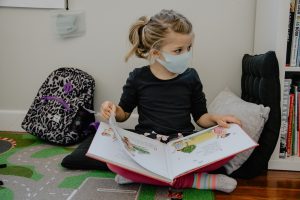
There’s a lot of preoccupation in schools, particularly for adolescents who need to get their Year 12 certificates or qualifications, on getting them to catch up if they’ve had disrupted learning. There’s an ongoing debate with the government, who are pushing to use some of the school holidays to help these kids catch up academically. These kids are frightened. They’re coming back to school after being confined to home. They have been told there’s something perilously dangerous in the world, and now we’re saying go to school and catch up with your learning. We’re missing some steps here. We need social-emotional safety for our adolescence just as much as for our younger children. We need to help them integrate back into schools and their peer groups. If we attend to their social and emotional needs, they’ll catch up because they learn when they’re in the right emotional state. Humans have a thirst for learning and will achieve what they need to succeed. That isn’t always understoodHumans have a thirst for learning and will achieve what they need to succeed. That isn’t always understood..
Dr. Krishnamoorthy: When we think about big groups of people, we don’t often consider their social-emotional safety. People’s mental health was not well regarded in the COVID-19 pandemic response. Interestingly, the social-emotional needs of people are never a key feature of how things are managed in society.
Dr. Golding: And that’s understandable, the crisis came, and we had to deal with it quickly. Like in my model, the first thing you must do is attend to the immediate danger. There is a knock-on effect, though. For example, we know that adolescent suicides are increasing now, and mental health everywhere has been compromised. As we ease out of this pandemic, we must attend to this. It can be easy to say, “everything’s normal again”, “get the kids back into school, get them caught up on their learning, and they will be fine”. It’s not as easy as this. These kids have been through some awful trauma through this pandemic, whether it’s touched them personally or whether they just watched it on the news and heard about it. We’ve all been affected by the trauma of this and some children in a very, very personal way. They’ve lost parents or family members, and this is an excellent example of working with massive trauma. We’re going to help these children return to school, but we’ve got to do it safely, in an emotionally healthy way.
Chapter Summary
- Trauma can occur from influences outside of the family and from within family relationships.
- Blocked trust develops out of pervasive trauma early in life, which creates a block to trusting other relationships.
- PACE principles help promote the experience of relational safety between adults and children.
- Collaborative consequences are effective in helping a child learn they can make things better and repair relationships.
- If students are understood and have a relationship with teachers, their nervous system will calm, and this will help them feel safe at school. Then they can learn academics.
- The well-being of teachers is crucial to the well-being of children. Teachers need to feel supported and safe to implement relational frameworks with students.
![]() Listen to the full interview on the Trauma Informed Education Podcast
Listen to the full interview on the Trauma Informed Education Podcast
REFERENCES
Ayre, K., & Krishnamoorthy, G. (2020). Trauma informed behaviour support: A practical guide to developing resilient learners. University of Southern Queensland. https://usq.pressbooks.pub/traumainformedpractice/
Ayre, K. & Krishnamoorthy, G. (Hosts). (2021, April 11). Educating students with blocked trust with Dr. Kim Golding [Audio podcast episode]. In Trauma Informed Education. SoundCloud. https://soundcloud.com/trauma-informed-education/educating-students-with-blocked-trust-with-dr-kim-golding?utm_source=clipboard&utm_medium=text&utm_campaign=social_sharing
Bombèr, L. M., Golding, K., & Phillips, S. (2020). Working with relational trauma in schools: An educator’s guide to using Dyadic Developmental practice. Jessica Kingsley Publishers.
Cardiff and Vale University Health Board. (2022). Blocked trust. https://cavuhb.nhs.wales/files/resilience-project/parent-group-resources/12-blocked-trust-parents-english-pdf/
Golding, K. (2015). Parenting in the moment: Connection first before responding to behaviour. https://kimsgolding.co.uk/backend/wp-content/uploads/2016/02/Parenting-in-the-moment.pdf
RSA Shorts. (2014). Brené Brown on empathy. [Video]. YouTube. https://www.youtube.com/watch?v=1Evwgu369Jw
Scottish Attachment in Action. (2018, September 27). A Day with Dan – Conference themes. [Video]. Vimeo. https://vimeo.com/292109115?embedded=true&source=vimeo_logo&owner=66040245

